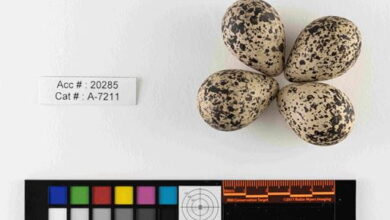
Dry Down Your Crops For Harvest
By Ellen Keys, Summer Student, Moose Jaw and Mackenzie Hladun, MSc, AAg, Crops Extension Specialist
Desiccants can be helpful tools at harvest time to encourage crop dry down. They work by interfering with photosynthesis, causing rapid plant cell breakdown and the release of their liquid contents.
Also known as contact herbicides, desiccants rely heavily on canopy penetration and plant coverage to achieve the desired efficacy. True desiccants include group 10, 14, and 22 herbicides. Producers must use higher water volumes and nozzles that provide good coverage to maximize their performance. Proper application of desiccants may provide producers with some benefits including elimination of swathing, reduced time from maturity to threshing readiness, fewer shatter losses, minimized late disease development, more even ripening of crops and preventing lodging.
There is a minimum number of days that must pass after applying a product before a crop can be swathed or straight cut, also known as the pre-harvest interval (PHI). These PHIs are in place to ensure the levels of chemical residues on the harvested crop are within acceptable limits. This is important to protect Canadian grain markets as well as the animals who ingest it. Following the PHIs will ensure that chemical residues do not go over the maximum residue limits (MRLs) and are safe for consumption. More information on MRLs can be found on the Government of Canada’s website.
One of the most important factors for successfully using desiccants is the timing of application. Applying desiccants too early can interfere with seed filling and cause yield loss. Because desiccants do not accelerate maturity, only promote plant dry down, applications made too early can also promote green seed in the crop. Applications made too late may not prevent shattering and could eliminate some benefits associated with desiccation. The grain moisture should be less than 30 per cent in the least ripe part of the field before a desiccant is applied. Ensuring applications are at the right crop stage, using recommended product rates, surfactants and water volumes will go a long way in achieving desired results.
Staging for pre-harvest desiccation application depends on crop type. A general rule of thumb for lentils, field peas, chickpeas, dry beans, faba beans and soybeans is not to apply before there has been a change in colour for approximately 80 per cent of the pods. For canola, different desiccants require application at different maturity stages. For example, diquat formulations should be applied after 90 per cent of the plant’s seed is brown whereas saflufenacil formulations can be applied at 80 per cent brown seed. For wheat, utilizing a thumbnail test is a good strategy for timing. If you can leave a dent without the kernel splitting, it’s ready to be desiccated. Always check the product application timing prior to spraying to ensure green seed isn’t harvested in the crop and proper dry down is achieved. Desiccated crops are generally harvested earlier if combining starts as soon as dry down is complete. Earlier harvest reduces crop exposure to wet weather and eliminates the risk of swath movement from the wind and reduces the risk of post-swathing disease. Desiccation may be a good option in cooler, wetter falls.
Desiccant should be chosen accordingly and depend on what the intended end use of the crop is. For more information about desiccants, refer to the 2023 Guide to Crop Protection, speak with your local crop extension specialist or contact the Agriculture Knowledge Centre at 1-866-457-2377.








































